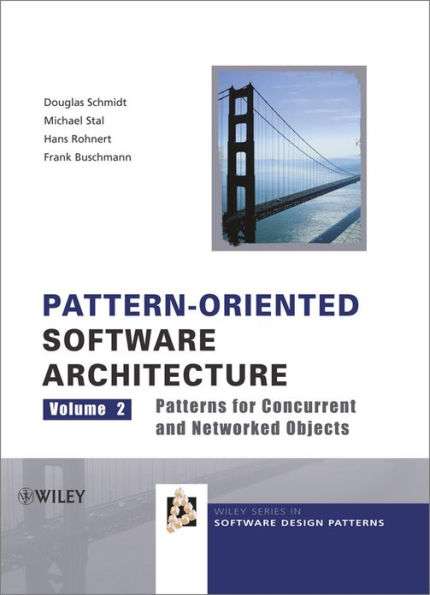The book presents 17 interrelated patterns ranging from idioms through architectural designs. They cover core elements of building concurrent and network systems: service access and configuration, event handling, synchronization, and concurrency. All patterns present extensive examples and known uses in multiple programming languages, including C++, C, and Java.
The book can be used to tackle specific software development problems or read from cover to cover to provide a fundamental understanding of the best practices for constructing concurrent and networked applications and middleware.
About the Authors
This book has been written by the award winning team responsible for the first POSA volume "A System of Patterns", joined in this volume by Douglas C. Schmidt from University of California, Irvine (UCI), USA.
Visit our Web Page
The book presents 17 interrelated patterns ranging from idioms through architectural designs. They cover core elements of building concurrent and network systems: service access and configuration, event handling, synchronization, and concurrency. All patterns present extensive examples and known uses in multiple programming languages, including C++, C, and Java.
The book can be used to tackle specific software development problems or read from cover to cover to provide a fundamental understanding of the best practices for constructing concurrent and networked applications and middleware.
About the Authors
This book has been written by the award winning team responsible for the first POSA volume "A System of Patterns", joined in this volume by Douglas C. Schmidt from University of California, Irvine (UCI), USA.
Visit our Web Page

Pattern-Oriented Software Architecture, Patterns for Concurrent and Networked Objects
450
Pattern-Oriented Software Architecture, Patterns for Concurrent and Networked Objects
450
Product Details
| ISBN-13: | 9781118725177 |
|---|---|
| Publisher: | Wiley |
| Publication date: | 04/22/2013 |
| Series: | Wiley Software Patterns Series |
| Sold by: | JOHN WILEY & SONS |
| Format: | eBook |
| Pages: | 450 |
| File size: | 10 MB |
